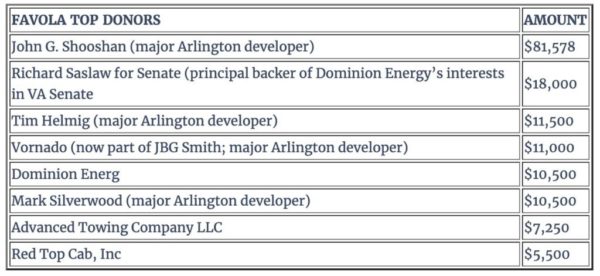 Peter’s Take is a weekly opinion column. The views and opinions expressed in this column are those of the author and do not necessarily reflect the views of ARLnow.com.
Peter’s Take is a weekly opinion column. The views and opinions expressed in this column are those of the author and do not necessarily reflect the views of ARLnow.com.
In April 2019, the Arlington County Board approved a new Public Open Spaces Master Plan (“POPS plan”). The POPS plan includes a commitment to “add at least 30 acres of new public space over the next 10 years.” Sadly, this commitment is merely an aspiration backed up by zero Arlington tax dollars.
Arlington’s Parks and Recreation Commission has rightly condemned (at p. 3) this lack of funding:
The commission is extremely disappointed with the lack of commitment by the county manager’s CIP [Capital Improvement Plan] proposal for park land acquisition funds… for the next ten years. This decision represents a retrenchment on established county policy to provide funds for strategic and opportunistic park land acquisition. As the county grows in population the need for open space opportunities, both for casual use and recreation purposes, and for natural resource preservation, continues to grow… [W]e believe that a proposal in line with what the current POPS process is proposing of acquiring 30 acres of land over the next 10 years must be supported with a realistic funding commitment…
Arlington continues to fall behind other localities and Arlington’s own prior practices in providing access to parkland
A comprehensive 2016 report from the Civic Federation (“Civ Fed report”) documents how Arlington has continued to fall behind other localities and Arlington’s own prior practices regarding:
- ratio of parkland to population
- dollars devoted to new parkland acquisition
The Civ Fed report explains (at p. 5):
As of 2015, Arlington County had 1,784 acres of parkland within its borders. Of those 1,784 acres, 949 acres were owned by Arlington County, 700 acres were owned by the National Park Service (most of which is Arlington Cemetery), and 135 acres were owned by the Northern Virginia Regional Park Authority.
In 1995, Arlington County had 10.8 acres of parkland per 1,000 residents. By 2014 the County’s population had grown by over 43,000 residents, and the parkland to population ratio had declined to 7.9 acres of parkland per 1,000 residents.
By contrast, Washington, DC, has 13.2 acres of parkland per 1,000 residents, and Fairfax County has 28.3 acres of parkland per 1,000 residents.
The Civ Fed report also traces the history of Arlington’s declining investment in acquiring new parkland (at p. 3):
[B]etween 1995 and 2008, funding for parkland acquisition per two-year bond cycle was between $4.0 and $8.5 million, with most cycles at $8.5 million. Since then… there has been a decline…. Over the six years between 2008 and 2014, land acquisition bond funding totaled only $3.0 million, but [was]supplemented by a total of $5.47 million in pay-as-you go (PAYGO) annual budget allocations. Yet, the total funds of $8.47 million available for land acquisition during the latter six-year period was still far less than the $8.5 million that was typical for each two-year cycle between 1996 and 2004 (an eight-year period).
The next CIP must fully fund the open space acquisition targets in the POPS plan
In accordance with prior practice, all relevant County departments and agencies already are planning for the next CIP (covering fiscal years 2021-2030). The next CIP will be adopted one year from now.
Arlington County’s latest population growth forecast (Profile 2019) projects (at p. 5) that our population will rise from the current 226,400 to significantly more than 270,000 by 2040. Without allocating enough Arlington tax dollars for new open space acquisition, Arlington’s ratio of parkland to population will continue to degrade.





